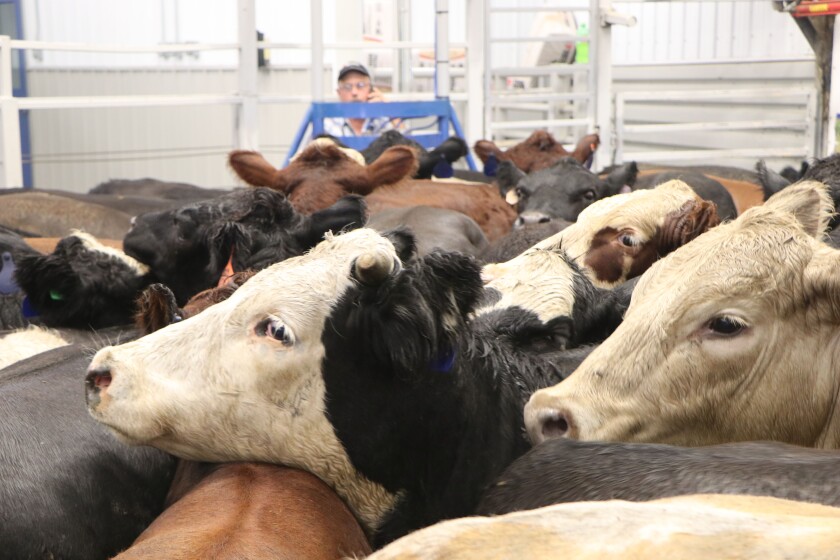Navigating Service Risks with Bagley Risk Management
Comprehending Animals Threat Defense (LRP) Insurance: A Comprehensive Overview
Browsing the realm of animals danger protection (LRP) insurance coverage can be a complex venture for lots of in the farming sector. This sort of insurance coverage provides a safety internet against market variations and unforeseen conditions that can influence livestock producers. By comprehending the complexities of LRP insurance, manufacturers can make enlightened decisions that may safeguard their procedures from monetary threats. From how LRP insurance works to the numerous insurance coverage alternatives available, there is much to discover in this comprehensive overview that could possibly shape the way animals producers come close to threat management in their services.

Exactly How LRP Insurance Works
Occasionally, understanding the technicians of Livestock Threat Security (LRP) insurance can be complicated, however breaking down exactly how it functions can give clearness for herdsmans and farmers. LRP insurance policy is a threat administration tool made to safeguard animals producers versus unanticipated cost declines. It's crucial to keep in mind that LRP insurance is not an earnings assurance; instead, it concentrates entirely on price risk protection.
Qualification and Protection Options

When it pertains to coverage choices, LRP insurance uses producers the adaptability to pick the protection level, coverage period, and recommendations that best fit their threat management demands. Coverage levels typically range from 70% to 100% of the anticipated finishing value of the insured livestock. Manufacturers can additionally select protection periods that straighten with their production cycle, whether they are insuring feeder cattle, fed livestock, swine, or lamb. Recommendations such as rate risk protection can additionally customize protection to safeguard against negative market changes. By recognizing the qualification standards and coverage alternatives offered, animals producers can make enlightened decisions to handle risk properly.
Pros and Disadvantages of LRP Insurance
When assessing Animals Threat Defense (LRP) insurance, it is crucial for animals producers to evaluate the drawbacks and advantages inherent in this danger management device.

Among the key advantages of LRP insurance coverage is its capability to provide protection versus a decrease in animals costs. This can help protect producers from monetary losses arising from market fluctuations. In addition, LRP insurance offers a level of flexibility, permitting producers to tailor insurance coverage levels and policy periods to match their particular needs. By securing in an assured rate for their animals, producers can much better manage threat and prepare for the future.
Nonetheless, there are also some drawbacks to take into consideration. One constraint of LRP insurance policy is that it does not shield versus all types of threats, such as condition outbreaks or natural calamities. In addition, costs can often be expensive, particularly for producers with large animals herds. It is essential for manufacturers to thoroughly evaluate their private risk exposure and financial situation to determine if LRP insurance is the ideal danger management device for their procedure.
Recognizing LRP Insurance Coverage Premiums

Tips for Maximizing LRP Conveniences
Maximizing the advantages of Livestock Risk Defense (LRP) insurance requires strategic planning and positive threat monitoring - Bagley Risk Management. To maximize your LRP coverage, take into consideration the following suggestions:
Routinely Assess Market Conditions: Keep informed about market patterns and cost changes in the animals sector. By keeping track of these variables, you can make informed decisions regarding when to buy LRP coverage to secure against possible losses.
Set Realistic Coverage Levels: When picking coverage degrees, consider your manufacturing prices, market price of animals, and prospective dangers - Bagley Risk Management. Setting reasonable protection levels makes sure that you are effectively shielded without overpaying for unnecessary insurance policy
Diversify Your Insurance Coverage: Rather of depending entirely on LRP insurance policy, think about expanding your risk management techniques. Combining LRP with various other risk administration devices such as futures contracts or choices can provide thorough protection versus market unpredictabilities.
Evaluation and Adjust Protection Routinely: As market go to website problems alter, periodically review your LRP insurance coverage to ensure it aligns with your existing danger direct exposure. Readjusting protection levels and timing of acquisitions can help maximize your risk security method. By complying with these pointers, you can take full advantage of the advantages of LRP insurance policy and safeguard your livestock operation versus unexpected threats.
Final Thought
Finally, livestock threat protection (LRP) insurance coverage is a valuable device for farmers to manage the monetary threats associated with their livestock procedures. By understanding exactly how LRP functions, eligibility and protection alternatives, as well as the advantages and disadvantages of this insurance, farmers can make educated choices to safeguard their incomes. By meticulously thinking about LRP premiums and executing strategies to take full advantage of benefits, farmers can reduce possible losses and guarantee the sustainability of their operations.
Animals producers interested in getting Animals Threat Protection (LRP) insurance coverage can discover an array of qualification standards and insurance coverage alternatives customized to their details livestock operations.When it comes to coverage options, LRP insurance provides producers the versatility to select the protection degree, insurance coverage period, and recommendations that ideal match their danger administration requirements.To comprehend the ins and outs of Livestock Danger Security (LRP) insurance coverage totally, understanding the aspects influencing LRP insurance costs is crucial. LRP insurance coverage premiums are figured out by different aspects, including the insurance coverage level selected, the expected cost of livestock at the end of the coverage period, the type of livestock being guaranteed, and the size of the protection duration.Testimonial and Change Coverage Consistently: As market problems alter, regularly evaluate your LRP coverage to guarantee it aligns with your existing danger exposure.